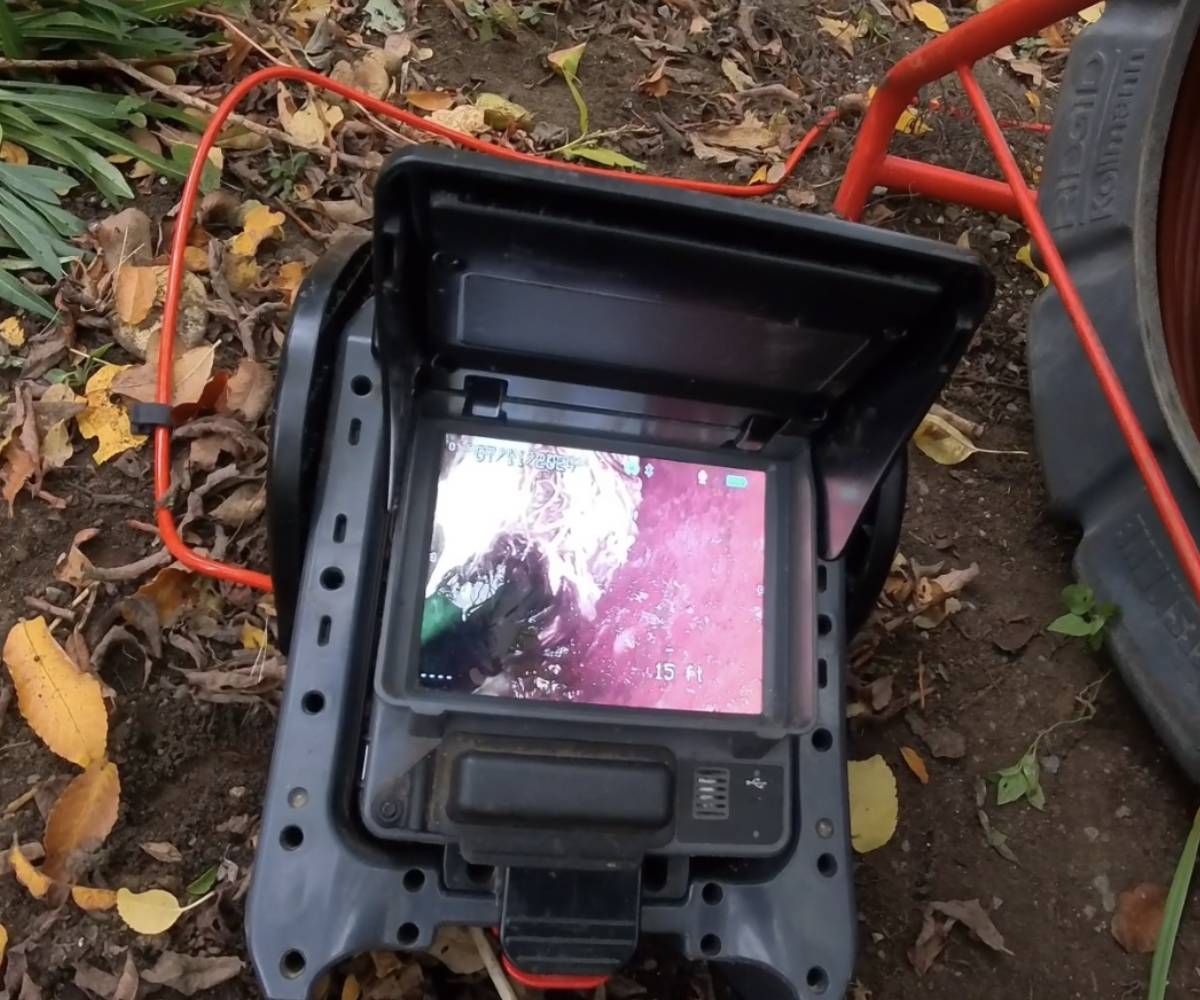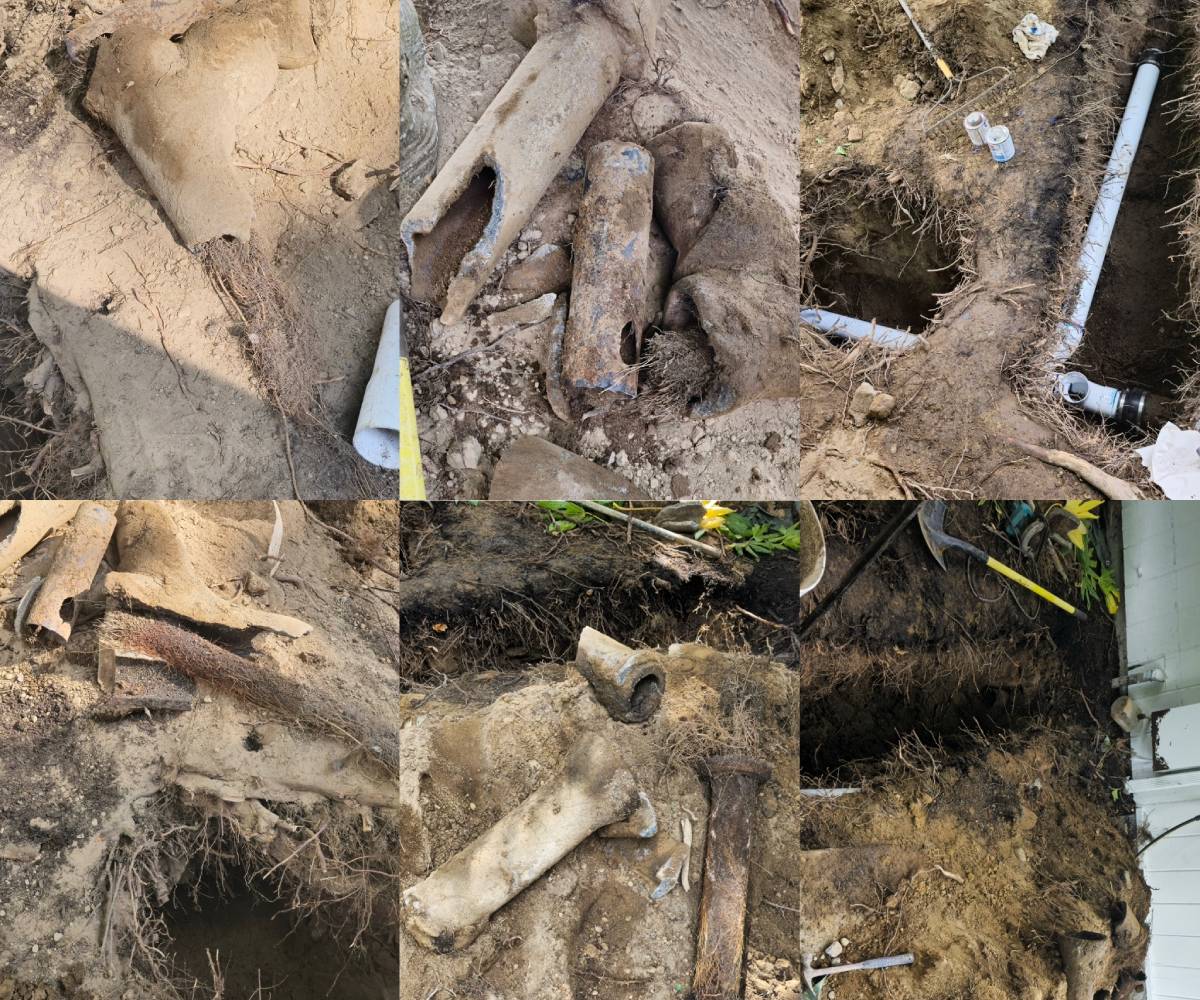At KnightRooter, we understand how unsettling it can be to learn that your sewer system has a problem after a sewer camera inspection. Whether you’re dealing with a stubborn blockage, tree root intrusion, or a cracked pipe, the good news is that identifying the issue is the first step toward fixing it. In this guide, we’ll walk you through the actionable steps to take after a sewer camera inspection reveals a problem, ensuring your plumbing system in Seattle is back to optimal condition. From understanding the inspection results to choosing the right repair method, KnightRooter is here to help with expert camera inspection Seattle and drain cleaning Seattle services.
Understanding Your Sewer Camera Inspection Results
A sewer camera inspection is a simple, non-invasive way to check for issues in your plumbing system. A high-resolution camera is inserted into your sewer line to capture real-time footage of the pipes. This footage can show problems like blockages, cracks, or other damage. Once the inspection is done and a problem is found, the first thing you need to do is understand what the results mean.
You’ll get a detailed report, often with video footage, that shows the exact location and type of issue. It could be something minor, like a clog, or something more serious, like a collapsed pipe. Knowing how severe the problem is will help you decide what to do next.
Common Sewer Line Problems Revealed by Camera Inspections
Sewer camera inspections can reveal a variety of issues in your pipes. Here are some of the most common problems you might encounter:
- Tree Root Intrusion: Tree roots often cause sewer line damage, especially in older homes. They can grow into pipes through joints, leading to blockages or even causing the pipe to collapse.
- Blockages and Clogs: Grease, debris, or foreign objects can build up in the pipes, blocking the flow of wastewater. This can cause slow drains or backups.
- Cracked or Collapsed Pipes: Over time, pipes can crack or collapse due to aging, ground movement, or external pressure. This needs immediate attention.
- Pipe Misalignment: Pipes can shift out of place over time, creating low spots where waste collects and causes recurring clogs.
- Corrosion: Older pipes, especially those made of cast iron, can corrode, leading to leaks or reduced water flow.
Each of these problems needs a specific solution, which you can choose based on the inspection results.

Step 1: Consult with Your Technician
After the sewer camera inspection reveals a problem, the first step is to talk to your technician. They’ll explain the footage and give you a clear understanding of what’s wrong. They’ll also tell you what could happen if you don’t fix the issue, like sewage backups, expensive repairs, or even health risks from sewer gases.
During this conversation, ask questions to get a better understanding:
- What’s causing the problem?
- How serious is the damage, and what happens if I wait to fix it?
- What are my options for fixing it, and how much will it cost?
This discussion will help you feel confident about the next steps and make an informed decision.
Step 2: Evaluate Repair Options for Your Sewer Line
Once you know what’s wrong, it’s time to look at your repair options. Depending on the problem, there are different ways to fix it that can fit your needs and budget:
Drain Cleaning for Minor Blockages
If the inspection shows a simple clog, like grease or debris buildup, drain cleaning might be enough. One effective method is hydro jetting, which uses high-pressure water to blast through the pipes and clear blockages. This can remove stubborn debris, including tree roots, without harming the pipes.
Trenchless Sewer Repair for Structural Damage
For bigger issues like cracked or collapsed pipes, trenchless sewer repair is often a good choice. This method is less invasive and lets you repair or replace damaged pipes without digging up your yard. Options like pipe lining (creating a new pipe inside the old one) or pipe bursting (replacing the old pipe with a new one) can save time and money while keeping your property intact.
Traditional Sewer Line Replacement
If the damage is severe, like a fully collapsed pipe, you might need a full sewer line replacement. This involves digging up the area to replace the pipe, but it can be done efficiently to minimize disruption.
Root Removal and Prevention
If tree roots are the problem, they can be removed using hydro jetting or mechanical cutting tools. To stop roots from coming back, you can use root barriers or chemical treatments to keep them away from your sewer line.
Step 3: Schedule Professional Drain Cleaning or Repairs
After deciding on a repair method, the next step is to schedule the service. You can often find 24/7 emergency services to fix your sewer line quickly, whether it’s drain cleaning or a full pipe replacement. Skilled technicians will use advanced tools to make sure the job is done properly.
Once the repair is complete, it’s a good idea to do a follow-up sewer camera inspection. This ensures the problem is fully resolved and your pipes are working well, giving you peace of mind for the long term.
Step 4: Prevent Future Sewer Line Issues
Fixing the current problem is important, but preventing future issues is just as key. Here are some simple tips to keep your sewer system in good shape:
- Schedule Regular Inspections: Getting a sewer scope every 1–2 years can help catch problems early, saving you from expensive repairs later.
- Be Careful What You Flush: Don’t flush items like wipes, sanitary products, or grease, as they can cause clogs.
- Take Care of Your Yard: If you have trees near your sewer line, think about installing root barriers to stop roots from growing into the pipes.
- Do Routine Drain Cleaning: Regular drain cleaning can prevent buildup and keep your pipes flowing smoothly.
- Watch for Warning Signs: Pay attention to signs like slow drains, gurgling sounds, or bad smells, which can mean a problem is starting.
By following these steps, you can lower the chances of future sewer line issues and keep your plumbing system working well for years.
Why Choose KnightRooter for Sewer Line Solutions in Seattle?
When it comes to sewer camera inspection and repair, KnightRooter is the trusted choice for Seattle homeowners and businesses. Here’s why:
- Advanced Technology: We use high-resolution cameras and cutting-edge repair methods like trenchless sewer repair to deliver precise, efficient solutions.
- 24/7 Emergency Services: Sewer problems don’t wait for convenient times. KnightRooter is available around the clock to address your emergencies.
- Experienced Technicians: Our team has years of experience handling plumbing issues in Seattle, ensuring every job is done right.
- Customer Satisfaction: We prioritize transparency, affordability, and quality service, earning us a reputation as a top provider of camera inspection Seattle services.
Ready to fix your sewer line problem? Contact KnightRooter today for expert drain cleaning Seattle and sewer repair services. Visit our Camera Inspection Seattle page or Drain Cleaning Seattle page to learn more and schedule your service.
FAQ
1. What should I do if my sewer camera inspection reveals tree root intrusion?
If tree roots are invading your sewer line, KnightRooter can remove them using hydro jetting or mechanical cutting tools. We also recommend installing root barriers or using chemical treatments to prevent future intrusions.
2. How much does it cost to repair a sewer line problem in Seattle?
The cost depends on the severity of the issue and the repair method. Simple drain cleaning may cost a few hundred dollars, while trenchless sewer repair or full replacement can range from $3,000 to $10,000 or more. Contact KnightRooter for a free estimate.
3. Can I prevent sewer line problems after a repair?
Yes! Regular sewer scope Seattle inspections, mindful flushing habits, and routine drain cleaning Seattle can help prevent future issues. Monitoring for warning signs like slow drains or foul odors is also key.
4. How long does it take to fix a sewer line issue?
The timeline varies based on the repair method. Drain cleaning can take a few hours, while trenchless repairs may take 1–2 days. Full sewer line replacements can take several days. KnightRooter works efficiently to minimize disruption.
5. Why should I choose KnightRooter for sewer camera inspections in Seattle?
KnightRooter offers 24/7 emergency services, advanced technology, and experienced technicians. We prioritize customer satisfaction and provide transparent, affordable solutions for all your plumbing issues Seattle.
For professional and fast drain cleaning Bothell, drain cleaning Seattle, and drain cleaning Bellevue, contact KnightRooter. Our team is ready to provide the best solutions for your drain issues.





No comment yet, add your voice below!